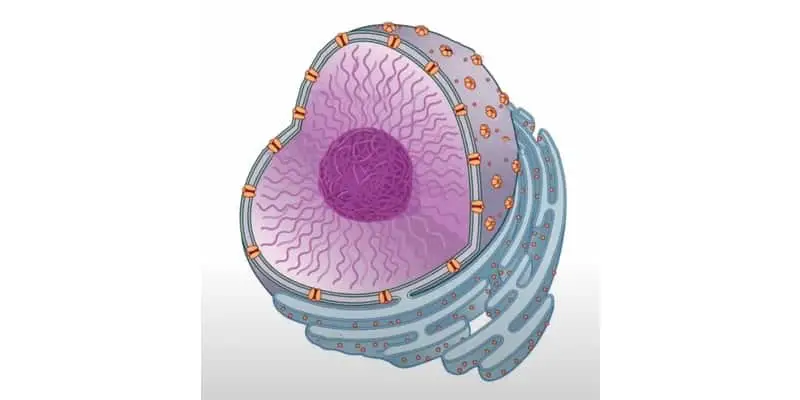Every well-functioning team needs a group of hardworking members and a leader who ensures everyone does their job. The cells that makeup living things function in much of the same way. Cells are made up of distinct compartments called organelles, each of which carries out a set of specific tasks that ensure the survival of the cell.
The nucleus is a crucial organelle that functions as the control center or ‘leader’ of the cell. The nucleus performs two critical functions; it stores the organism’s instruction manual in the form of DNA and regulates all the cell’s activities including growth, reproduction, communication, gene expression and protein synthesis.
The word nucleus is derived from the Latin word ‘nuculeus’ meaning seed; just like fruits are embedded with seeds in its center, the nucleus is usually found at the center of the cell. Organisms with cells containing a well-defined nucleus are called eukaryotes, while those without nuclei are called prokaryotes. This article will explore the structural and functional organisation of the cell nucleus in detail.
Where is the Cell Nucleus Located?
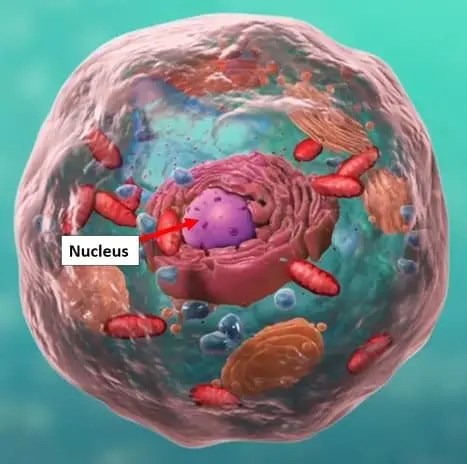
A nucleus can be easily visualized under a compound microscope. The shape of the nucleus can vary depending on cell type, but it is generally spherical. A swab of human cheek cells stained with methylene blue reveals a dark stain located approximately at the center of the cell. That’s the nucleus! The nucleus is one of the largest organelles in the cell, occupying about 10% of the cell’s volume.
In eukaryotes, the nucleus can also be clearly distinguished from the cytoplasm by a well-defined nuclear boundary. The nucleus is also typically attached to its fellow organelle, endoplasmic reticulum on one side. While the nucleus produces the instructions for protein manufacture, the endoplasmic reticulum is where proteins are made. Thus, these two organelles work together in producing the raw materials for most functions performed by the organism.
Cell Nucleus and Evolution

Prokaryotic cells without a well-defined nucleus were the first to evolve. However, in these cells semi-condensed DNA aggregates in a compartment called the ‘nucleoid’- which is thought to be the pre-cursor to the cell nucleus seen in eukaryotes. The nucleoid is attached to the innermost part of the cell membrane, which also contains all the machinery for protein production.
Thus the prokaryote manages to carry out protein production without organelles. However, since all the regulatory structures of a prokaryotic cell are dispersed all over its cytoplasm, it has typically less control over its functions compared to eukaryotes. Some Eukaryotic cells also do not contain a nucleus!
Mammalian red blood cells and platelets lack a well-defined nucleus. Red blood cells carry hemoglobin and oxygen to different parts of the body. It is thought that red blood cells evolved without a nucleus in order to maximize space for carrying hemoglobin.
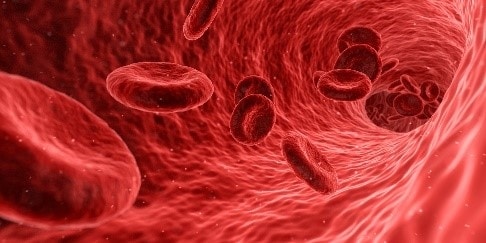
While some eukaryotic cells do not have a nucleus at all, some have more than one! The cells of the liver, osteoclasts and muscle fibers can have multiple nuclei in the same cell. Having multiple control centers allow these cells to perform complex tasks efficiently.

It is estimated by biologists, that the nucleus evolved over two billion years after bacteria and other prokaryotic cells. The cell membrane or other pre-existing membranes in the cell are thought to have wrapped around condensed DNA forming the first rudimentary nucleus.
This transformation of cell structure and the formation of well-defined compartments inside the cell called eukaryogenesis is one of the most definitive moments in evolution. The evolution of the nucleus was also the precursor for the development of all morphological complexity seen in higher level organisms.
In 1710, Anton Van Leeuwenhoek, also known as the father of microscopy, first elucidated the nuclear structure in amphibian cells, making it the first cell organelle to be observed. However, it would take a century before the definitive structure of the nucleus was described in a wide variety of plant and animal cells. However, the importance of the nucleus was not fully understood until the1860’s when a Swiss chemist named Johann Miescher first isolated hereditary material (DNA) from the nucleus which he then named ‘nuclein’.
Between 1903 and 1925 a string of discoveries elucidating the structure of the mitochondria, Golgi apparatus and DNA reinforced the central role of the nucleus. The discovery of electron microscopy was critical in defining the double layered nuclear membrane, nuclear lamina, chromatin packing and nuclear pore complexes.
Remarkably, many features of the nucleus including organisation and regulation of genetic material were only elucidated in the 50 years, with new discoveries continuing to be made every day.
Nucleus Structure
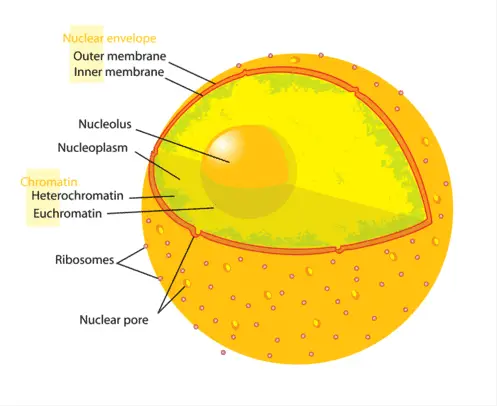
The most prominent structures making up the nucleus are the nuclear envelope and nuclear matrix. The nuclear envelope is the double layered membrane enclosing all the contents of the nucleus. In addition to helping maintain the structural integrity of the nucleus, the envelope also tightly regulates the contents that can enter and leave the cell. The envelope is also connected with the Endoplasmic reticulum thus allowing a continuous open channel between the two organelles.
During cell division (When one cell makes two copies of itself), the entire nuclear envelope is disassembled and reformed in the new cells. This allows the DNA inside the nucleus to be copied and transported to the two daughter cells.
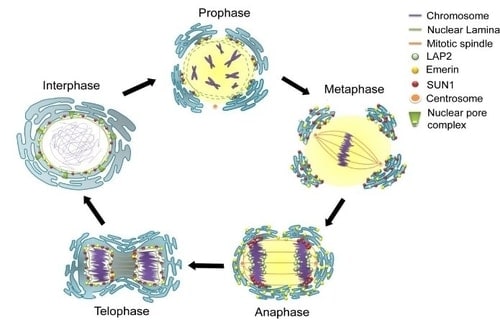
The outer and inner layer of the nuclear membrane are made up of phospholipids just like the cell membrane and are separated by perinuclear space of about 50 nanometers. The nuclear envelope is perforated by pores which selectively regulate the molecules that can be transported across the nuclear envelope.
In order to transport large molecules, these pores are enveloped by specialized protein, forming a large complex called nuclear pore complex. The proteins that make up the complex are called nucleoporins. These specialized proteins function like a barcode scanner. They recognize specific patterns on incoming molecules thus regulating which molecules can enter.
Cells in mammals such as humans contain over 3000 pores per cell! Each pore complex is surrounded by 8 proteins which is attached to a basket like structure that extends into the nuclear lamina. The basket serves as a scaffold, where molecules entering or leaving the cell can be stored until the associated proteins recognize the molecule.
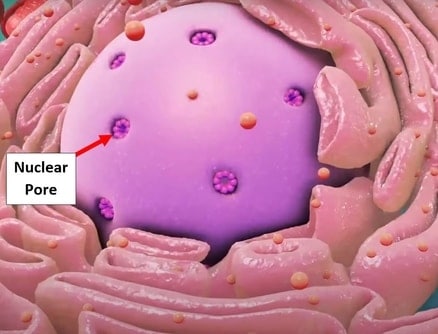
The nuclear matrix refers to the mechanical support system that exists within the cell. Much like the skeleton inside humans which allow us to maintain our shape, the nuclear matrix supports the cell. Just like the contents of the cell float in a fluid called the cytoplasm, the contents of the nucleus lay in a gelatinous substance called nucleoplasm. Apart from maintaining structural integrity, the nucleoplasm also protects the innermost contents of the nucleus from mechanical stress.
Progeria is a deadly developmental disorder which manifests with premature aging in children. Made popular by the movie ‘Benjamin Button’, the disease results from mutations in proteins that forms the nuclear matrix. As a result, the cell and its nucleus are unable to maintain its shape, leading to a collapse in structure.
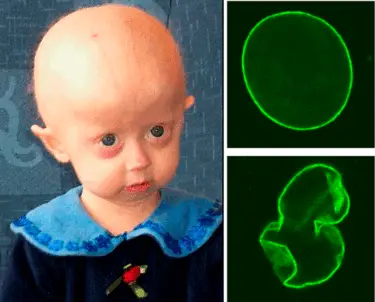
Nuclear Organelles
Unlike the cytoplasm, the nucleoplasm does not contain independent organelles enclosed in membranes. However, a number of distinct nuclear bodies with specific functions have been identified in eukaryotes.
The nucleolusis a dense structure, that appears as a dark spot under the microscope. The nucleolus primarily functions in producing a special complex called ribosomes. If the instructions for the organism are written down in DNA code, the cell needs a special magnifying class like ribosomes to transcribe this code.
The nucleolus is a good indicator of aging of the cell. Researchers at the Max Planck Institute found that flies which lived longer presented with a larger nucleolus when compared to those with shorter life expectancy. However, we don’t fully understand the connection between age and nucleolus yet!
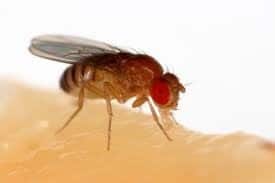
DNA, which holds hereditary information of the organism is about 3 meters in length and cannot be stored inside the tiny nucleus! Therefore, DNA is tightly packed using special proteins into a tight X shaped structure called chromosomes. The parts of the DNA that are not actively being read remain in a tightly coiled structure called heterochromatin, while the loosely packed euchromatin can be transcribed to form proteins.
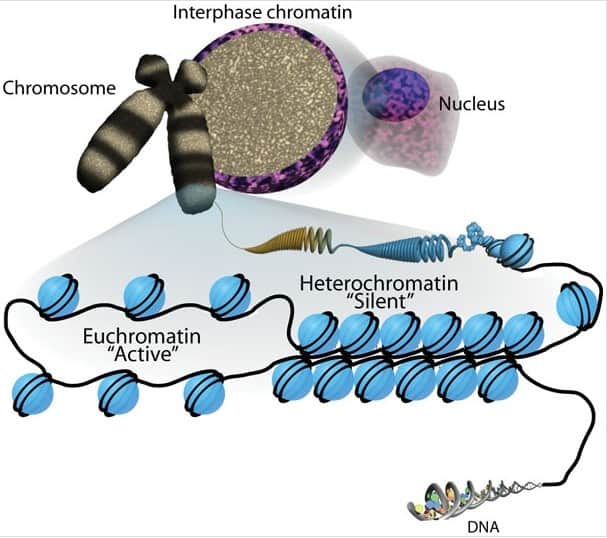
Cajal bodies are small (0.2 – 1.0 micrometer), fibrous structures that resemble coiled thread. A typical nucleus may contain up to 10 Cajal bodies which play a role in transcribing the genes into proteins.
With the advent of electron microscope, many smaller nuclear structures were discovered including polymorphic interphase karyosomal association (PIKA), promyelocytic leukaemia (PML), paraspeckles and splicing speckles. However, their functions have not been fully elucidated.
Cell Nucleus Functions
As the control center, the nucleus controls and monitors many functions of the cell including growth, multiplication and communication.
Gene Transcription
Gene Transcription refers to the process by which the information contained in the cell is transcribed into an intermediate form which can then be used to form proteins. This intermediary form is referred to as messenger RNA, so-called because it travels outside the nucleus as a messenger to initiate protein formation.
Apart from providing a stable site for gene transcription, the nucleus also regulates gene transcription. As a result, gene transcription in eukaryotes is highly regulated, less prone to mistakes when compared to prokaryotes. Take for example genes involved in inflammation. When humans are wounded, it is important for clotting factors to get activated and stop blood flow.
However, if clotting factors are always activated, it would seriously impede oxygen delivery to all cells in the body. The nucleus regulates inflammation by barring the proteins needed for gene transcription from reaching the respective genes.
mRNA Splicing
Activated Genes are transcribed to form messenger RNA molecules which subsequently leave the nucleus to form protein. However, before being translated, the mRNA’s need to be edited in order to remove any spaces between them (much like an editor proofreads an essay). This process is called splicing. The nucleus achieves this by preventing mRNA that has not been edited from leaving the nucleus.
Nuclear Envelope Barrier
The nucleus achieves regulation over the entire cell by controlling the molecules that enter and leave the nucleus. If a cellular process occurring at the cell membrane needs to be stopped, the nucleus stops raw materials needed for that process from leaving the nucleus. In contrast, when a process needs to be stimulated, the nucleus increases the production of its raw materials.
Cell Nucleus and Viruses
Viruses do not contain the essential machinery to create more copies of themselves. Therefore, they achieve replication by hijacking the nucleus of the host organism. When a virus enters the nucleus, the existing transcription machinery is fooled into creating multiple copies of the viral DNA which can then go on to infect more cells.
So, when medical researchers look for cures for viral diseases, they target the prevention of the mechanism involved in the nuclear hijacking.
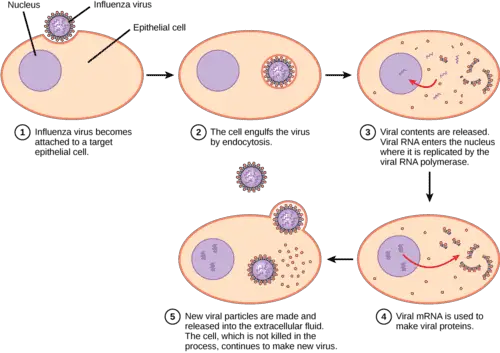
Takeaways
The nucleus is the coordinator and conductor of the cell, regulating the essential processes and activities at the micro level that allow the proper functioning of a much larger organism at a macro level.
You could say the nucleus is the brains behind the operation since it also stores the genetic material of the cell. The nucleus is literally at the center of it all in types of cells and although there is much more to be discovered about the nucleus, what we do know is beyond fascinating!
References
- Brock, T. D. (1988). The bacterial nucleus: A history. Microbiological Reviews, 52(4), 397–411.
- Cavalier-Smith, T. (1988). Origin of the cell nucleus. BioEssays: News and Reviews in Molecular, Cellular and Developmental Biology, 9(2–3), 72–78. https://doi.org/10.1002/bies.950090209
- Dekker, J., Guttman, M., & Lomvardas, S. (2016). A Guide to Packing Your DNA. Cell, 165(2), 259–261. https://doi.org/10.1016/j.cell.2016.03.039
- Devos, D. P., Gräf, R., & Field, M. C. (2014). Evolution of the nucleus. Current opinion in cell biology, 28(100), 8–15. https://doi.org/10.1016/j.ceb.2014.01.004
- Meldi, L., & Brickner, J. H. (2011). Compartmentalization of the nucleus. Trends in Cell Biology, 21(12), 701–708. https://doi.org/10.1016/j.tcb.2011.08.001
- Pederson T. (2011). The nucleus introduced. Cold Spring Harbour perspectives in biology, 3(5), a000521. https://doi.org/10.1101/cshperspect.a000521
- Puvion, E., Hernandez-Verdun, D., & Haguenau, F. (1994). The nucleus and the nucleolus. The contribution of French electron microscopists. Biology of the Cell, 80(2–3), 91–95. https://doi.org/10.1111/j.1768-322x.1994.tb00913.x
- Thorpe, S. D., & Charpentier, M. (2017). Highlight on the dynamic organization of the nucleus. Nucleus (Austin, Tex.), 8(1), 2–10. https://doi.org/10.1080/19491034.2016.1243634
- Wasąg, P., & Lenartowski, R. (2016). Nuclear matrix—Structure, function and pathogenesis. Postepy Higieny I Medycyny Doswiadczalnej (Online), 70(0), 1206–1219.
- Wieslander, L. (2004). The cell nucleus. Experimental Cell Research, 296(1), 1–3. https://doi.org/10.1016/j.yexcr.2004.03.003

